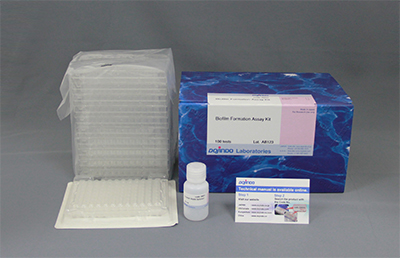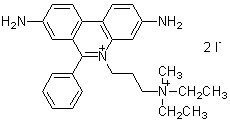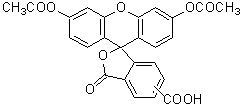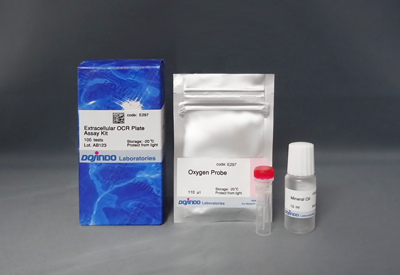Microbial Viability Assay Kit-WST
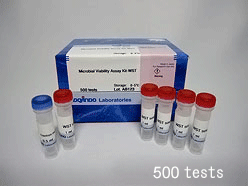
Microbial Viability Assay
- Colorimetric microplate assay
- Wide variety of microorganism detection
- No harvesting or washing required
-
Product codeM439 Microbial Viability Assay Kit-WST
| Unit size | Price | Item Code |
|---|---|---|
| 100 tests | $77.00 | M439-01 |
| 500 tests | $282.00 | M439-10 |
| 100 tests | ・WST Solution ・Electron Mediator Reagent (DMSO Solution) |
1 ml×1 0.1 ml×1 |
|---|---|---|
| 500 tests | ・WST Solution ・Electron Mediator Reagent (DMSO Solution) |
1 ml×5 0.5 ml×1 |
Product Description
Viable bacterial cell detections are very important for analyzing bacteria contamination in food or evaluating the cleanliness of facilities in order to protect us from food poisoning and infections. Bacterial cell detections are also used for the screening of sanitizing agents and drug resistance detections. Generally, counting the number of colonies on an agar plate is the standard method for determining the number of viable bacterial cells in samples. However, colony formations require one to several days. Dojindo’s Microbial Viability Assay Kit-WST can be used to determine the number of viable bacterial cells in a sample by a colorimetric method and can be applied to 96-well microplate assays. The electron mediator in the kit receives electrons from viable bacterial cells and transfers the electrones to WST, one of the water-soluble tetrazolium salts developed by Dojindo. Bacterial cell viability then can be determined by monitoring the color intensity of WST formazan dye. Since several types of media used for bacterial cell cultures and components do not interfere with the assay(Fig. 5), simply add the assay solution and incubate for one to several hours to determine the initial number of viable bacterial cells in the sample(Fig. 2). This assay kit was co-developed with the Biotechnology and Food Research Institute, Fukuoka Industrial Technology Center.
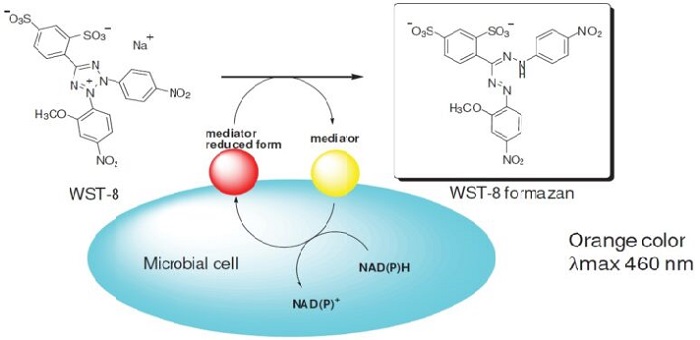
Fig. 1 Bacterial cell viability detection mechanism.
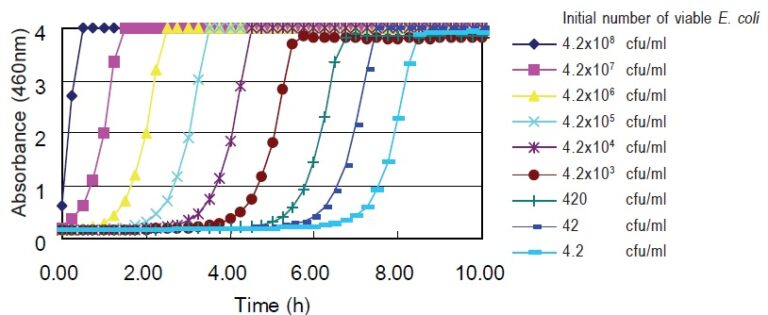
Fig. 2 Correlation between initial number of E. coli and time-dependent O.D. increase. The initial number of viable E.coli were determined by a colony counting method.

Fig. 3 Correlation between the initial number of SA and time-dependent O.D. increase. The initial number of viable SA were determined by the colony counting method.
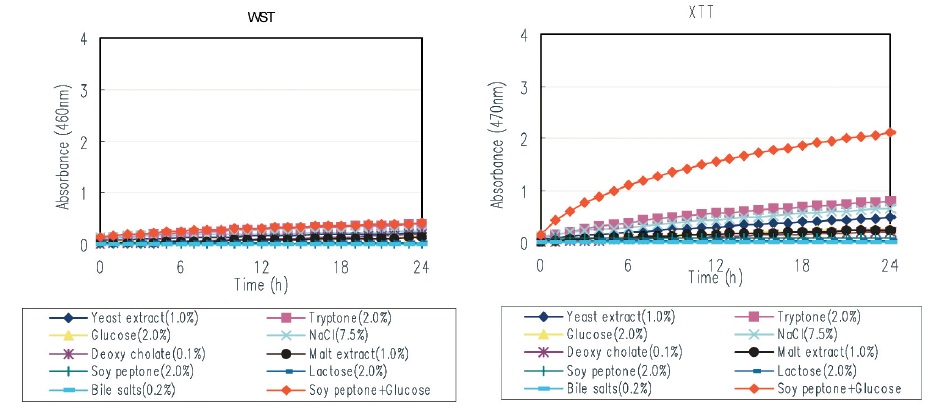
Fig. 4 Influence of culture media or substances used for bacterial cell culture.
The data indicated that WST is less sensitive to various culture media or substances which are used for bacterial cell culture. WST is a better tetrazolium salt than XTT for bacterial cell viability assays.
Manual
Technical info
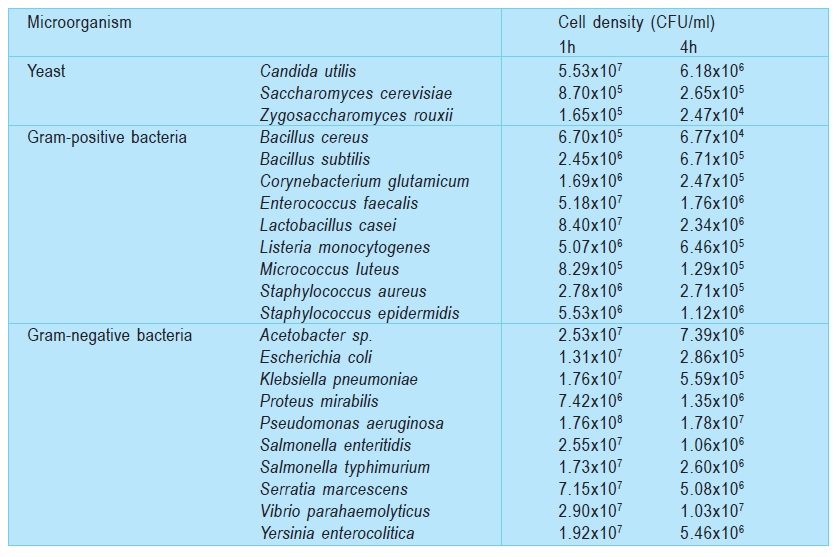
Table 6 Initial cell number can reach O.D. 0.5 with 1-hour and 4-hour incubation.
The initial cell number of each microorganism was determined by colony counting. Each microorganism cell culture was diluted with medium and 190 μl of the cell culture was added to each well. Then 10 μl of assay solution was added. The cells were incubated at 30oC or 37oC for 1 hour and 4 hours to determine how many cells are required to reach O.D.=0.5 at 460 nm.
Application
General Procedure 2
Determination of the susceptibility of Staphylococcus aureus to oxacillin
Oxacillin: antimicrobial agent: 0-64 μg/ml
Microorganism: Staphylococcus aureus (SA)
Methicillin-resistant Staphylococcus aureus (MRSA)
1. Culture SA or MRSA with Mueller-Hintonmedium containing various concentrations of Oxacillin for 6 hours at 35ºC.
2. Add Microbial Viability Assay solution equal to 1/20 the volume of the culture medium.
3. Incubate for 2 hours at 35ºC.
4. Measure the O.D. at 450 nm to determine the MIC (Minimum inhibitory concentration).
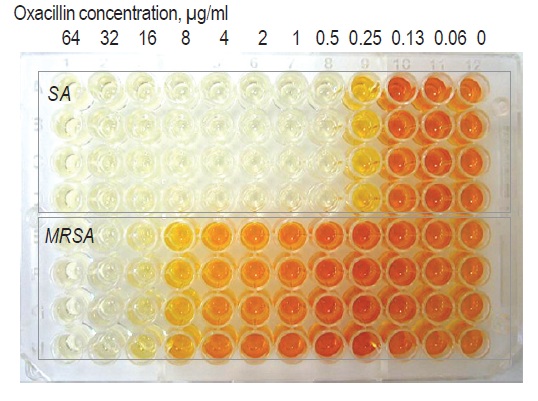
Fig. 4 Susceptibility test of SA and MRSA against Oxacillin*.
The data indicated that MRSA has lower susceptibility than SA. The MICs of MRSA (32 μg/ml) and SA (0.5 μg/ml) are close to the MICs determined by the CLSI (Clinical and Laboratory Standards Institute) method.
References
1. T. Tsukatani, et al., Colorimetric cell proliferation assay for microorganisms in microtiter plate using water-soluble tetrazolium salts. J Microbiol Methods. 2008;75:109-116.
2. T. Tsukatani, et al., Colorimetric microbial viability assay based on reduction of water-soluble tetrazolium salts for antimicrobial susceptibility testing and screening of antimicrobial substances. Anal Biochem. 2009;393:117-125.
3. T. Tsukatani, et al., Determination of water-soluble vitamins using a colorimetric microbial viability assay based on the reduction of water-soluble tetrazolium salts. Food Chem.2011;127:711-715
4. T. Tsukatani, et al., Comparison of the WST-8 colorimetric method and the CLSI broth microdilution method for susceptibility testing against drug-resistant bacteria. J Microbiol Methods. 2012;90:160-166
5. Jeffrey C. Pommerville. 2014. Fundamentals of Microbiology: Body Systems Edition (3rd Third Edition), p.339. Burlington, MA: Jones & Bartlett Learning.
6. Shutao Zhang, Xinhua Qu, Juyang Jiao, Haozheng Tang, Minqi Wang. You Wang, Hongtao Yang, Weien Yuan, Bing Yue, "Felodipine enhances aminoglycosides efficacy against implant infections caused by methicillin-resistant Staphylococcus aureus, persisters and biofilms", Bioact. Mater., 2021, doi:10.1016/j.bioactmat.2021.11.019.
Handling and storage condition
| 0-5°C | |
|
Danger / harmful symbol mark |

|
|---|---|







